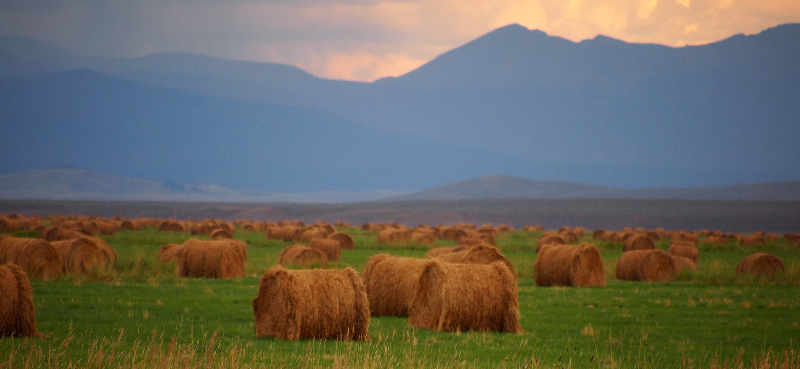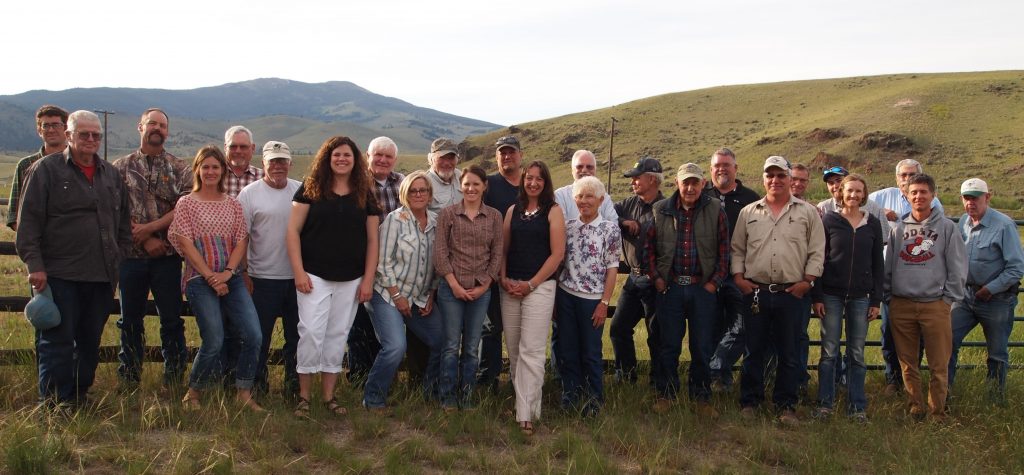Established in 1995, the Big Hole Watershed Committee is a watershed group and central hub of diverse viewpoints on resource and community concerns. We are a consensus-based 501(c)(3) nonprofit organization dedicated to conservation of the Big Hole River and surrounding watershed. Our work is comprehensive, spanning floodplains, communities, wildlife, water, and fisheries. We provide education, facilitate conversations and planning for issues in our area, and put meaningful restoration work on the ground.
The Big Hole River valley is a high elevation basin at the headwaters of the Upper Missouri River. We are open lands, big sky and big mountains, free flowing river, and traditional ranching culture. Unlike most other watersheds in the West, our area remains relatively undeveloped. It is of the utmost importance to preserve the quality of the river and its watershed in order to:
- Maintain and enhance the quality of life for residents and visitors;
- Protect the river, wildlife, and habitat for future generations, including adapting for climatic resiliency; and
- Be a model of restoration, recovery, and stewardship.

The Big Hole Watershed Committee’s Governing Board represents diverse interests, including ranching, utilities, local government, sportsmen, conservation, tourism, and outfitting. Representatives from local, state, and federal agencies participate as technical advisers.
We make our decisions based on consensus and work closely with other conservation organizations and agencies on watershed restoration and management plans.
We are committed to:
- Involving all parties that are willing to seek practical solutions to benefit all interests;
- Promoting a common understanding among individuals and groups with diverse viewpoints;
- Fostering the ability of local individuals and groups to create effective solutions to local problems; and
- Seeking long-term solutions based on sound information.

How and Why we Started . . .
“Nothing would have happened on the ground without the BHWC … and I am damn proud of the work we’ve done … if we hadn’t done anything in ’95, the grayling would be listed and we’d all be suffering.”
– Harold Peterson, Upper Big Hole River Rancher and BHWC Board Member, 2012-2018
The 1980’s and early 1990’s were not an easy time in the Big Hole. Several years experienced drought, grayling declining, and tensions rising. In 1994, the USFWS announced Arctic grayling as a candidate for the Endangered Species Act, with the Upper Big Hole River a critical threatened population stronghold.
In August 1994, after a tour on the Big Hole River with the Legislative Water Policy Committee, 6 ranchers sat down to write a letter to Governor Marc Racicot asking for help to set up a committee to deal with problems on the river. Their intention was to seek positive actions instead of reacting to negative reports.
View/Download this letter (PDF).
Water rights holders were invited to a meeting January 1995 and met several times that spring. The group created a format that would appoint 2 ranchers from each of 4 river stretches. The next step was to invite other interests, a difficult move for the ranchers, who had found themselves at odds with some outside interests. And yet, they knew involving diverse interests was a key to success. They included water utility, businesses, conservation groups, conservation districts, guides & outfitters, local government, and sportsmen.
The new group met for the first time as the “Big Hole Watershed Committee” (BHWC) later that year. Determining they needed support to be organized, the group involved the Montana Consensus Council.
Only weeks after the group formed, and with Montana Consensus Council support, they faced their first challenge. In the prior legislative session, Montana Department of Natural Resources and Conservation (DNRC) was directed to study rivers that were candidates for “Chronically Dewatered” listing. The study proposed listing the Big Hole River as Chronically Dewatered, a designation that would require control and measurement of all irrigation diversions. The Big Hole River was identified as a candidate after a 1993 survey that cited, while historical conflicts over water had been resolved at a local level successfully, future cooperation may be in jeopardy due to changes in land ownership and increasing demand. There was heavy local resistance to the designation and concern the new BHWC would be in jeopardy.
The newly formed BHWC swayed DNRC to delay the decision and allow the committee to identify solutions to water issues that needed to be resolved. The BHWC was in favor of local committee and local control rather than of state or federal control of resources. The group worked quickly, scheduling a series of educational meetings to learn about water management, history, and options, and formulated a work plan.
One of their first milestones came in 1997, enacting the first Drought Management Plan in the state. The plan used voluntary participation to meet target river flows and is still in place today.
In 2004, conditions worsened. Grayling were proposed for emergency Endangered Species Act listing and likely subsequent permanent listing. The Center for Biological Diversity sued USFWS over the grayling and suggested they may sue individual irrigators. The BHWC met with partners and advisors and strengthened efforts. The MFWP-administered Upper Big Hole CCAA followed in 2005, enrolling landowners in site plans to benefit grayling in exchange for some litigation protection. That same year, BHWC became a 501(c)(3) certified non-profit, able to secure funding to support water and grayling work.
The DNRC, satisfied with progress, still has not issued a Chronically Dewatered status on the Big Hole River.
In 2014, USFWS announced the Arctic grayling did not warrant listing under the Endangered Species Act, citing successful conservation efforts.
The BHWC went on to become a model in watershed and drought management statewide.
The 22 Original Governing Board Members, 1995
- Harold Peterson, Beaverhead Planning Board
- Monte Clemow, Big Hole Tourism Committee
- Scott Reynolds/Tim Sullivan, George Grant Chapter Trout Unlimited
- Holly Franz, Montana Power Company
- Brian Kahn, The Nature Conservancy
- Mike Murphy, Montana Water Resources Association
- Jim Masker/Todd Collins, Big Hole River Foundation
- David Schultz/Joe Mullaney, Butte-Silver Bow Water
- Garth Haugland, Beaverhead County Commission
- Art Christensen, Beaverhead Conservation District
- Craig Fellin, Big Hole Outfitters
- Senator Swysgood, Montana Senate District 17
- Wayne Turner, Rancher, Above Wisdom
- Bob Peterson, Rancher, Above Wisdom
- Phil Ralston, Rancher, Wisdom to Divide *
- Perry Peterson, Rancher, Wisdom to Divide
- Jim Hagenbarth, Rancher, Divide to Glen *
- Randy Smith, Rancher, Divide to Glen *
- George Trischman, Rancher, Glen to Twin Bridges
- Dick Marshall, Rancher, Glen to Twin Bridges
- Bill Garrison, Rancher, Chairman
- Liz Jones, Rancher, Secretary *
* Individuals that continue to serve the BHWC.
Agencies participate as advisors, including MFWP, USFWS, Montana DNRC, etc.
Funding
The Big Hole Watershed Committee is funded through donations and government/foundation grants. Visit our donation page to make a contribution. Past funders have included, but are not limited to:
- Alongside Wildlife Foundation
- Brainerd Foundation
- Cinnabar Foundation
- Bureau of Land Management
- Bureau of Reclamation
- George Grant Trout Unlimited
- High Stakes Foundation
- Montana Chapter American Fisheries Society
- Montana Department of Environmental Quality
- Montana Department of Natural Resources and Conservation
- Montana Fish, Wildlife and Parks
- Montana Livestock Loss Board
- Montana Natural Resource Damage Program
- Montana State Fund
- Montana Trout Foundation
- Montana Trout Unlimited
- Montana Watershed Coordination Council
- National Fish and Wildlife Foundation
- Natural Resources Conservation Service
- The Nature Conservancy
- United States Fish and Wildlife Service
- United Way of Beaverhead County
- Vital Ground Foundation
- Wildlife Conservation Society
